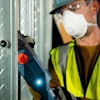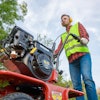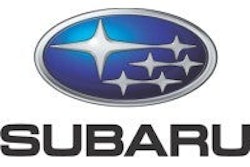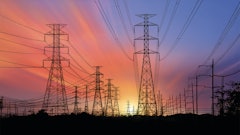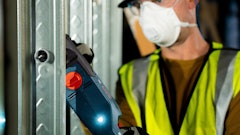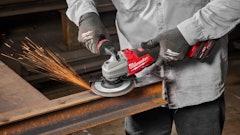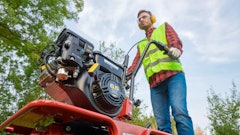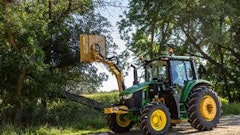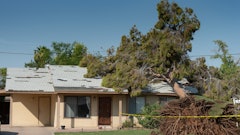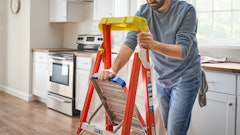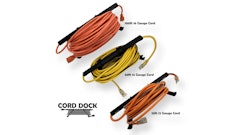
New requirements from the California Air Resources Board (known as CARB) and a proposed rule from the Environmental Protection Agency (EPA) aim to further reduce lawn and grounds equipment emissions.
Looking at today's lawnmowers, leaf blowers and other equipment, strides already have been made to make them cleaner. Over the last decade, changes in outdoor equipment design have reduced exhaust emissions by more than 70 percent, according to Bill Harley, CEO of the Outdoor Power Equipment Institute (OPEI), representing lawn and garden maintenance products and components manufacturers and suppliers.
Still, no pollution is better than some pollution. Pollution from gasoline-fueled lawn and garden equipment has two sources: the combustion process (exhaust emissions) and fuel evaporation. OPEI reports emissions from outdoor power equipment, such as walk-behind lawn mowers, account for less than 3 percent of all smog-forming emissions nationwide.
The non-profit organization and others continue working with EPA and CARB to further reduce small engine emissions. Historically, California has had a more serious pollution problem than any other state and began addressing air pollution decades before the federal government. When the Clean Air Act was written, California was given the authority to continue writing its own regulations. Other states must follow EPA standards.
"All regulations are developed in cooperation with stakeholders over long periods of time that allow concerns to be vented and addressed," says Dimitri Stanich, CARB public information officer.
While California air is cleaner than it has been in more than 50 years, Stanich says the state's population is large and growing quickly, and with growth typically comes emissions increases.
"We constantly look at our regulations to determine their efficacy and whether technology has developed to the point where we can ask industry to take advantage of those developments and reduce emissions further," Stanich says. "Technology changes quickly and something could be developed tomorrow that completely changes the way we do things."
New regulations
Since the start of this year, engines (including displacement between 80cc and 225cc) sold or used in California for lawn and grounds equipment (and other applications, excluding agriculture and construction), must be built to meet CARB Tier 3 engine requirements.
The changes required are:
- Lower exhaust emissions through an exhaust catalyst for reduced oil consumption and improved combustion efficiency.
- Control evaporated fuel emissions from the fuel system while the engine is not operating. This can be done by using a non-vented fuel tank cap and carbon canister vapor recovery system, and non-permeable fuel tanks and fuel lines.
In April of this year, EPA proposed a new emissions control program similar to CARB's that would reduce hydrocarbon emissions from small spark-ignition engines by about 35 percent.
With the proposed rule, nonroad gasoline-powered engines, such as those in lawn and garden equipment, would see an additional 35-percent reduction in hydrocarbon and nitrogen oxides emissions beyond a 60-percent reduction that finished phasing in last year under an earlier rulemaking, according to EPA. Those engines would also see a 45-percent reduction in fuel evaporative emissions, EPA says.
The entire proposal and information about how to submit comments on the proposal - by August 3 - can be found at www.epa.gov/otaq/equip-ld.htm. New standards would apply as early as 2011 for most lawn and garden equipment (under 25 horsepower).
Until then, CARB Tier III will be the highest standard in the United States for small engines to follow. Most manufacturers will follow CARB's lead because they prefer to make engines that can be sold in any state, says Brad Murphy, vice president of sales and marketing for Subaru Robin.
To meet Tier III exhaust emission requirements, Murphy says many engine manufacturers are going to have to put catalytic converters in their exhaust systems. Subaru has come up with a different solution: improving the seal of the piston rings to keep combustion gases in the combustion chamber. With an improved ring system, there is less oil contamination so oil change intervals are extended.
Small engines down the road
Larger sources of pollution, like automobiles today, have cleaner engines because they have benefited from more technological advances and have been subject to regulatory controls longer.
Often, small engine technology follows automobile technology. Already small engines have better carburetors and overhead valves, instead of side valves. Today's top-of-the-line products even have fuel injection, with metered air and fuel so fuel burns completely and emissions are less, says John Deere product manager Greg Weekes.
Changes also will be made for a better start. The new ReadyStart system from Briggs & Stratton eliminates manual priming and choking.
Recalling "days of old," Weekes says, "you'd have to choke and choke, and then you'd have to pull-start the mower. Sometimes the mower would start, sometimes it wouldn't. When the mower finally started, it would smoke from the over choking. It used to be a real mess. Briggs & Stratton has done a nice job with the walk-behind mower and its ReadyStart™. I think you're going to see that in lawn tractors pretty quick."
Another change worth considering is eliminating two-cycle engines and replacing them with four-cycle engines, he says, noting it might never happen but it should be looked at.
Different fuel types also may be used. E10 works with many small engines but when ethanol is more than 10 percent, equipment can be negatively impacted, Harley points out.
Do your part, breathe easy
Regardless of the technology being used, everyone plays a part in protecting the environment from pollutants. Rental businesses can ensure that their products are EPA and CARB certified by looking at the label found usually on the fuel tank or blower housing of the engine.
If equipment is transported across state lines, rental businesses should know if the states' emission requirements differ. If equipment is being used in California, Stanich emphasizes it must be certified for sale and operation in California.
Any equipment adjustments and modifications should be made within the manufacturer's guidelines to avoid changing emissions values, says John Keeler, national training manager for Stihl Inc.
If an engine needs replacing, it should be replaced with an engine meeting the same or more-up-to-date emissions requirements if the integrity of a product's emissions values is to be maintained.
Because rental businesses are very good at turning their inventory, Weekes says, they don't end up with a lot of "dirty engines." Instead, he says, they have the latest technology for customers to rent.
To make effective use of the latest technological advances, equipment must be kept in good condition.
"Rental businesses should seek to keep their equipment in the best operating condition," Stanich says. "Simple tune-ups and maintenance will assure we get the emissions reductions the machine was designed to achieve."
Murphy says it this way, "If you're going to do any one thing, service the air cleaner. That's the No. 1 cause of engine death. The number of hours of use will be cut dramatically if you don't service the air cleaner - especially with dusty or dirty applications."
After every rental, the air filter, along with safety features, should be checked, says Jeff Nesom, Husqvarna lawn and garden product manager.
Another measure is to make sure that the fuel mix ratio is correct, he adds.
When engines and equipment overall are in good operating condition, they are not only cleaner and more environmentally friendly, they're less expensive to operate. And the rental experience is better.
Whether it's the rental business owner or the rental customer, anyone handling gasoline must avoid spills. Even little spills should be avoided, because they evaporate and pollute the air.
Rental companies can educate their customers on equipment use and let them know there have been tremendous strides in improving emissions, Harley says. There is a lot of false information floating around, he adds.
Quiet, please
Often the public is misinformed about leaf blowers. In some areas, noise is more of an issue than emissions. In recent years, communities have been in an uproar over leaf blowers being too noisy. Regulation of noise (including leaf blower bans) occurs mostly at the municipal, and sometimes county or state level.
Harley says before banning blower use, communities should know their facts. Leaf blowers are about 75 percent quieter than they were 10 years ago, he says. Many are about 65 db(A). In comparison, a normal conversation is about 60 db(A).
Backpack leaf blowers are huge time savers, Keeler says. To help prevent or reverse equipment bans, rental businesses should ensure their customers know how to properly operate backpack leaf blowers.
"There's a difference between gathering leaves and haphazardly dispersing leaves in all directions," Keeler says. "You don't necessarily want to constantly run leaf blowers at full throttle, which increases noise and particulate matter in the air."
Keeler also points out blower operators can respect early morning and evening hours and reserve blowing tasks for other times during the day.
OPEI's "Leaf Blowers: A Guide To Safe & Courteous Use," available at www.opei.org/order/index.asp, provides more information on safe courteous operation.
Overall, outdoor power equipment today is cleaner and quieter, as well as safer and more efficient, Harley says.
And it's only going to get better.
For more information:
- "Proposed Emission Standards for New Nonroad Spark-Ignition Engines, Equipment, and Vessels" ( www.epa.gov/otaq/equip-ld.htm)
- "Leaf Blowers: A Guide To Safe & Courteous Use" ( www.opei.org/order/index.asp)
- "Environmental Fact Sheet: How Green Spaces Benefit the Environment," Project EverGreen ( www.projectevergreen.com)
|
Recent advances
also offers BioPlus bar and chain oil with a vegetable oil base; BioPlus is rated by the Coordinating European Council to be 93.8 percent biodegradable in only 21 days. |
Naturally green
|

